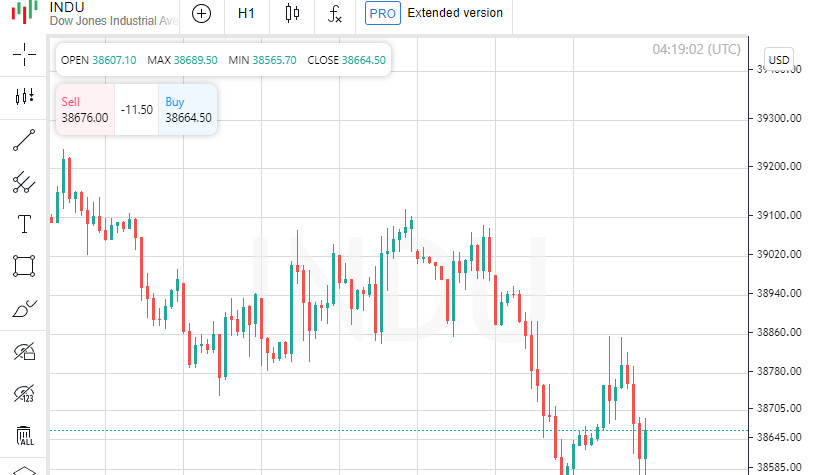
On Wednesday, the leading indexes on Wall Street ended trading in the plus side, motivated by economic indicators and statements by Federal Reserve (Fed) Chairman Jerome Powell, which confirmed speculation about a possible lowering of the federal benchmark interest rate this year.
During Wednesday's speech, Powell expressed his view on the Fed's upcoming rate cut, emphasizing that the U.S. economy remains stable and a recession seems unlikely. However, he refrained from making specific promises about the timing of monetary easing, citing a lack of confidence in inflation dynamics.
In preliminary comments announced ahead of his speech to the U.S. Congress, Powell said inflation has "come down significantly" since hitting a 40-year peak in 2022. However, he said, additional confidence in a further decline in inflation is needed to begin the process of lowering interest rates.
In addition to Powell's remarks, Mark Luschini, who is a senior investment strategist at Philadelphia-based Janney Montgomery Scott, emphasized that Wednesday's economic reports further bolstered expectations for lower interest rates and also boosted confidence in the state of the labor market.
Fresh statistics indicated that the U.S. private sector job gains in February were slightly lower than expected.
Job Openings and Labor Turnover Survey (JOLTS) data for January showed a slight decline in the number of job openings and a decrease in the pace of hiring, indicating a gradual improvement in the labor market.
The upcoming nonfarm payrolls report for February, due on Friday, is expected to shed light on the current state of the labor market and the potential impact on economic policy.
The Dow Jones Industrial Average (.DJI) index registered an increase of 75.86 points or 0.20% to close at 38,661.05. The Standard & Poor's 500 Index (.SPX) gained 26.11 points or 0.51% to close at 5,104.76, while the Nasdaq Composite (.IXIC) index moved up 91.96 points or 0.58% to close at 16,031.54.
On the previous trading day, Tuesday, indexes on Wall Street experienced a drop of more than 1% due to a decline in the value of large-capitalized stocks and in anticipation of Powell's remarks, which were eagerly awaited by investors.
On Wednesday, nine of the eleven key S&P 500 industry sectors ended the day in the green. Leading the way were the utilities sector (.SPLRCU), whose shares jumped nearly 1%, and the information technology sector (.SPLRCT), up 0.9%.
The Durable Goods sector (.SPLRCD) was the least dynamic, declining by 0.4%.
Chip makers stood out among the rest, rebounding from the previous day's decline: the Philadelphia Semiconductor Index (.SOX) rose 2.4%, hitting an all-time closing high for the fourth time in the past five trading sessions.
Tesla (TSLA.O) was among the companies pressuring the consumer staples sector, with shares falling 2.3% and notable declines for the third straight session.
An analyst at Morgan Stanley, whose opinion the market is paying close attention to, adjusted downward the stock's target price, pointing to continued waning interest in electric vehicles in leading markets, including China, even as prices have fallen markedly.
Additionally, the Baird specialist expressed concerns about Tesla's first-quarter earnings, suggesting that delivery volume forecasts may still need to be adjusted downward.
Shares of Chinese company JD.com, which is traded in the U.S. market, posted a significant rise of 16.2% after the e-commerce company announced quarterly revenue that exceeded analysts' expectations and an expansion of its share repurchase program.
Shares of cryptocurrency-related companies also saw a rebound. Specifically, shares of Coinbase Global (COIN.O) were up 10% and MicroStrategy (MSTR.O) shares were up 18.6%.
Shares of CrowdStrike Holdings (CRWD.O) jumped 10.8% as the company predicted full-year results that beat Wall Street analysts' forecasts. That was driven by increased cybersecurity spending by companies in response to growing threats on the Internet.
At the same time, shares of their competitor, Palo Alto Networks (PANW.O), showed a decline of 4%.
The European STOXX 600 Index (.STOXX) was up 0.39%, while the MSCI Global Equity Index (.MIWD00000PUS) was up 0.59%.
Emerging market equities also performed positively, rising 0.67%. MSCI's broad index of Asia-Pacific shares excluding Japan (.MIAPJ0000PUS) finished 0.78% higher. While Japan's Nikkei index (.N225) declined slightly, losing 0.02%.
Bitcoin, after hitting record highs on Tuesday but subsequently pulling back, rallied again. At the last mark, the cryptocurrency was up 5.6%, reaching a value of $66,884.
The U.S. dollar showed a decline compared to major world currencies. The dollar index (.DXY) lost 0.4%, while the euro added 0.38% to reach $1.0896.
The U.S. dollar showed a decline against major world currencies. The dollar index (.DXY) lost 0.4%, while the euro added 0.38% to settle at $1.0896.
The Japanese yen strengthened 0.45% against the U.S. dollar, settling at 149.39 per dollar. The British pound sterling was last seen at $1.2735, reflecting an increase of 0.25% on the day.
The yield on 10-year U.S. Treasuries fell to a one-month low.
The price of benchmark 10-year government bonds last rose 8/32, pushing the yield down to 4.1078% from the 4.137% recorded at the end of the day on Tuesday.
The price of the benchmark 30-year government bond also increased, most recently by 18/32, bringing its yield down to 4.2406% from 4.274% recorded at the end of the previous day.
Oil prices experienced an uptrend after U.S. oil inventory data showed a smaller-than-expected increase and in light of Powell's promise of lower interest rates.
US West Texas Intermediate (WTI) crude oil rose 1.25% to settle at $79.13 per barrel, while Brent rose to $82.96, marking a 1.12% increase for the day.
Gold continued to set new records for the second consecutive day, driven by expectations of monetary policy easing in the US. The spot gold price rose 0.9% to $2146.29 per ounce.
 English
English 
 Русский
Русский Bahasa Indonesia
Bahasa Indonesia Bahasa Malay
Bahasa Malay ไทย
ไทย Español
Español Deutsch
Deutsch Български
Български Français
Français Tiếng Việt
Tiếng Việt 中文
中文 বাংলা
বাংলা हिन्दी
हिन्दी Čeština
Čeština Українська
Українська Română
Română

